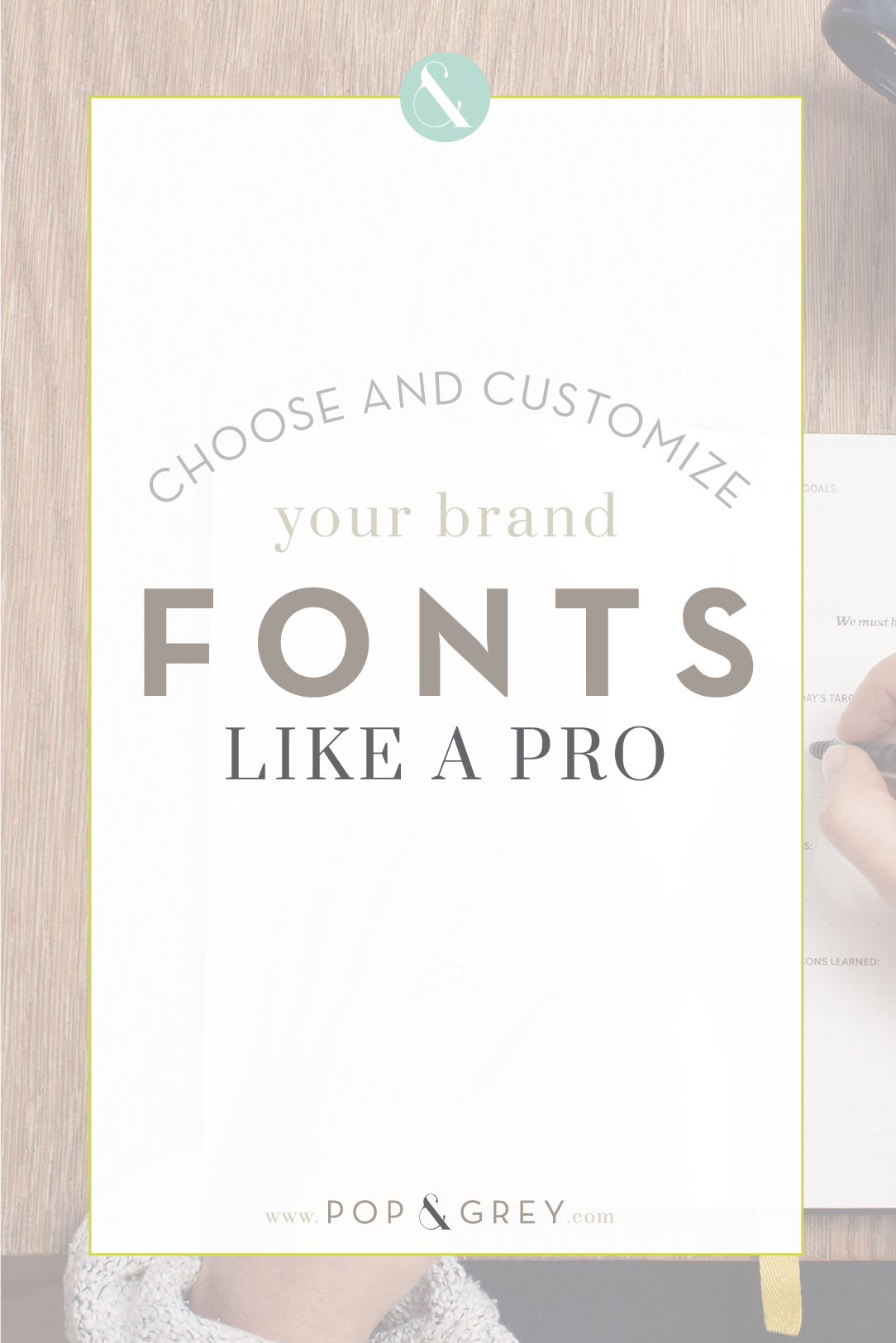
Choosing brand fonts and sticking to them is not for the faint of heart. The idea sounds simple enough, but soon you are on page 59 of Creative Market, and that’s just the sans serif options. You’re tired, they all look the same, and you’ve got other fires to put out today. So you choose one willy nilly for your logo, promptly forget what it is and use whatever font strikes your fancy as you create assets. Â This is a recipe for building a brand that is unrecognizable, underwhelming and confusing.
If you’ve been creating brand assets for long, you probably know the chronic offenders to avoid like Comic Sans and Papyrus. Sorry to break it to you, but avoiding bad choices doesn’t necessarily equal good choices.
In my years of working with clients to design brands and the assets to support them, I’ve learned that poor font choices don’t stem from bad taste. Some of my clients with impeccable taste came to me with the biggest font messes. Poor font choices are made because people don’t know how to evaluate the differences. Designers forget that other people didn’t spend years in college analyzing descenders and kerning. It’s not ingrained in everyone’s brain to the point that they “just know” which fonts are beautiful and pair well together. It’s just a sea of jumbled letters.
When you learn to tell the difference between the myriad font choices, you can choose fonts with intention, ones that communicate your brand personality and create a distinctive look. Follow a few pro tips, and you can do it yourself sooner rather than later.
Let’s look at some basic differences for evaluation. Be sure to scroll to the bottom to grab the list of my favorite fonts in each category and their sources.Â
First, decide what style of font you are looking for. That will help to narrow down the overwhelming number of options. Second, learn to adjust the specific characteristics of each font like a professional designer. Choosing a font and customizing the fine details will tailor it just to you, making it more recognizable and branded.
Font Styles
There are some other styles, like handwriting and completely hand lettered, but we’re just sticking to basics for right now.
Serif
Serif fonts are more formal and traditional, but can also have an ultra modern look when paired with the right colors and secondary fonts. In printed works, serifs are easier to read in paragraph copy because the serif makes the individual letters more distinctive and our brain recognizes them faster. Serifs are less likely to cause eye fatigue in large blocks of text.
Sans Serif
Sans serif fonts are more modern and contemporary with super clean lines. Sans serifs are easier to read on screen than serifs. Even in print, if body copy gets very small, sans serif is more readable because of its simpler shape.
Slab Serif
Slab serif fonts are a more masculine take on a serif font. At thinner weights, these can have a more streamlined look like a sans serif.
Semi Serif
Semi serif fonts are a happy medium between serif and sans serif, these are less formal than traditional serif fonts and a little less minimalist than sans serif.
Script
Script fonts add personality and character in small doses. Never use these for body copy or larger blocks of text. Because they are usually more intricate, scripts pair well with simple sans serif and serif fonts.
Display
Any font (including script) that is only meant for large display fonts and should never be used for body copy.
professional font customizations
Almost nothing in life is perfect straight out of the box. Choosing a font in the right style category is a good start. Once you are happy with a starting font, adjust these characteristics manually until it’s the perfect fit.
leading
Leading is the space between lines of text. More space gives an airy feel and is easier to read. Less space can be harder to read and feels more intense and heavy. Leading drastically affects the tone of your words, but be sure to not to sacrifice readability for effect. Moderation is key.
tracking
Tracking is the space between letters. Tracking refers specifically to the spacing of an entire word or group of words. Each font has specifically-designed tracking that can be adjusted. If the letters of a word are not connected, tracking can be adjusted to make a font feel heavy or airy. In script fonts, where the letters are often connected, adjusting tracking will throw off the connectors.
kerning
Kerning is the space between letters. Kerning refers specifically to the spacing between two particular letters in a word. Once you are happy with the overall tracking, kerning may be needed between certain letters to make it more pleasing to the eye. Offenders are often letters that protrude farther out on the top or bottom instead of being relatively constant spacing all the way down. W, V and T are some letters to look out for. Also, double letters such as ff or tt can cause issues. Kerned letters give your typography a professional look.
glyphs
Glyphs are special flourishes, graphic elements or alternative letters in a font. They are the hidden gem of good fonts and a reason to invest in many paid fonts versus free options. Glyphs are a way to add unique personality beyond the standard font.
weight
The heaviness of the letters. Most fonts give you the ability to adjust the weight of a font, some more than others. Hairline thin fonts can be beautiful and delicate but sometimes have trouble in print reproduction. Thick, heavy fonts stand out, but often seem hard and cold. Pay attention to the feeling you want to evoke to decide which weight to use or create contrast and hierarchy by mixing thin and bold weights. Weight is an easy way to control a viewer’s eye.
There are other factors that go into choosing and adjusting your brand fonts, but this list gives you a peek into what the pros do. Be sure to pay attention to the licensing rights on the font of your choice. Make sure you can use it for commercial purposes and purchase rights to the web font if you also want it on your website.


